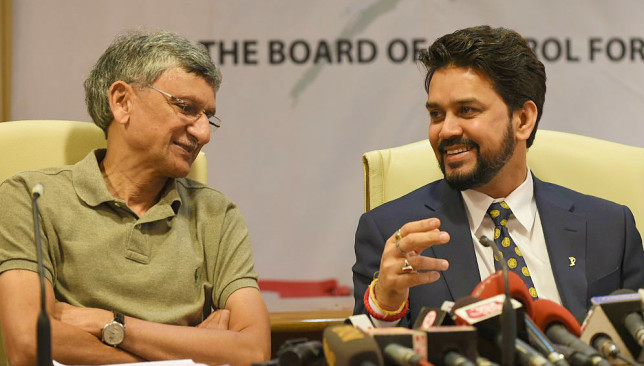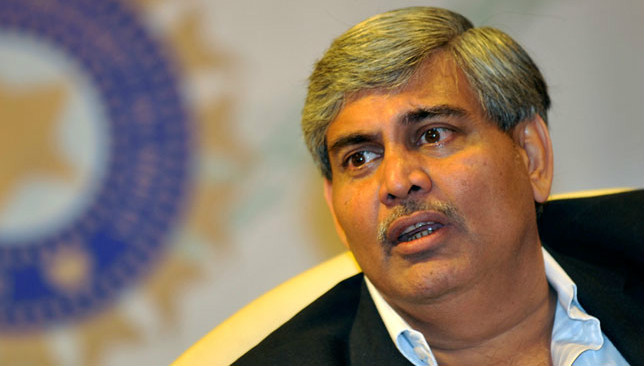
On Monday, the Supreme Court of India accepted most of the recommendations made by the three-member Lodha Committee for the reform of cricket in the country, with particular attention to the structure of the BCCI and its governance and administration.
Following submission of the report by the Committee in January, the apex court has upheld most of its propositions and given the BCCI six months’ time to implement them, with the Committee’s namesake, former Chief Justice of India RM Lodha appointed as steward to ensure smooth implementation.
The Committee – in which Lodha was aided by retired Supreme Court judges R Raveendran and Ashok Bhan – first formed in January 2015, and has suggested several reforms that aim to shake up the power structure in the board and redistribute power more equitably among officials, state representatives and also future administrators, as election of office-bearers was also a subject of review.
Significant propositions pertain to the organisation of board officials and the power allotted to them. Under this report, states would be limited to one cricketing body or association for representation on the BCCI electorate, no more.
Furthermore, only members of the board with a defined territory would be full members. Non-territorial members – such as Railways, Services and All India Universities – would be limited to associate status with no voting rights. Multiple members from the same state would also be limited to associate status.
Speaking exclusively to Sport360.com, lawyer Desh Gaurav Sekhri felt this move was essential to ensuring a more equitable distribution of power among state bodies.
“What the board is getting at through the Lodha Committee report is that representation isn’t evenly spread out. And that is why there tends to be concentration of power and a concentration of development. ‘One state, one vote’ is an international precedent where many associations like FIFA gave a voting right to each country.”
Foresee much discomfort because of the one state one vote issue; especially in key states of Gujarat and Maharashtra that have 3 teams each
— Harsha Bhogle (@bhogleharsha) July 18, 2016
“We see, for example, that Bihar has no voice and the Union Territories typically don’t have much of a voice in how the BCCI is conducted. We also see just how much attention is given to the game in the states or union territories where there isn’t a vote.”
Six months is the brief period given by the Supreme Court for implementing these reforms, but Sekhri feels the limited time may be a hindrance.
“These are states [Gujarat, Maharashtra] which are used to having powerful autonomous bodies. To then ask them to share that voting right will create a lot of intra-state conflict.”
As part of the measures to improve transparency, the recommendation of three new independent officials was also made. These include an ombudsman (the already-appointed Justice AP Shah, selected by the BCCI in November 2015), an ethics officer and an election officer.

Further appointments include a proposed replacement of the BCCI Working Committee, the Board’s highest decision making body. The recommendation instead suggests installation of a nine-person Apex Council.
This would include representatives from amongst the players themselves, and the report also recommends establishment of players’ associations, whose members would be Indian internationals and several first-class cricketers who retired not sooner than five years ago.
Office holders are also set to undergo review of eligibility criteria and tenure. Individuals barred from holding positions on the board would include ministers and bureaucrats currently holding office, those holding positions in various state associations and those above the age of 70.
“A politician/administrator or a bureaucrat/administrator nexus should definitely be curbed, though not necessarily because the conflict of interest is harmful. It’s a perception of conflict of interest which throws this uncertainty about why certain decisions are made and also it’s simply a question of not having enough time to look after both roles simultaneously.”
“It’s absolutely right to prevent a duality of roles, because you kill two birds with one stone – you eliminate conflict of interest and ensure that you have an administrator whose only goal is to ensure that the development of cricket, at state or international level, is of primary importance.”
The age limit has been upheld by the Court, but might appear discriminatory.
“Seventy is a little bit of a harsh cut off because across the world you have numerous administrators who have been older than seventy and yet have done an admirable job in administering the sport.”
Trusting younger persons with more revolutionary ideas may, however, be the way forward for Indian cricket.
“If you’re putting an age limit, you’re ensuring that a certain new generation of administrators who are young and have a fixed and finite period of time to do their best for the sport, and then hand over the reins to another young generation.”

Former board president Shashank Manohar feels that BCCI clout may be lost
The Committee has also proposed five elected members on the Board – a president, a vice-president, a secretary, a joint secretary and a treasurer. These persons would serve a maximum of three terms of nine years apiece, with no person permitted to serve two consecutive terms.
Nine years may seem like an excessive length of time, but there are several stages to a decision making process that might require every one of those years.
“The strategic planning, the changes, having them actually develop and take shape. It takes a significant amount of time, especially looking at grassroots development, the promotion of a sport as popular and as far-reaching as cricket.”
Other recommendations include nomination of a Comptroller and Auditor General to check the exercise of the Board’s monetary muscle, restricting the power of the president (for example, eliminating the president’s involvement in team selection) and, in a rare allowance of power, permitting the board to decide its own broadcasting policy and contracts.
“The decision to retain autonomy, from the Board’s perspective, for negotiating professional contracts and having control over the broadcasting rights, is very important. It’s a great decision by the Board which also shows that they’re being rational and they’re looking at the sustainability and viability of the sport itself.”
The initiatives may appear revolutionary at first, aimed at stripping power from the hands of the principal authority bit by bit. This impression, however, may be a misleading one.
Much more than what has been ever before. But full transparency will be achieved when BCCI falls under the RTI Act. https://t.co/UjbQrOtLyN
— Rahul Mehra (@TheRahulMehra) July 18, 2016
“The goal is to professionalise and to also help the perception externally. It’s a very quick and drastic step where they’re actually taking over how cricket should be administered. But although it looks drastic right now, the Court or the Lodha Committee aren’t looking to replace the Board any which way in the long run. It has just set them on the right track.”
The court has also directed the Parliament to decide the matter of legalising betting and placing the BCCI under the ambit of the Right to Information (RTI).
“It’s a good way to get a popular as well as judicial consensus on legalising betting. They feel that the Board performs a public function and therefore it should come under the RTI, like any public body would.”
Sekhri entirely supports the move to bring the BCCI under the ambit of the RTI, believing a dissenting argument is a difficult one to hold.
“It’s clear that governance has been an issue. And if the reputation of the Board is eroded, then it’ll be very difficult for it going forward to recover and fulfil the objective that cricket is meant to fulfil in the Indian ecosystem.”